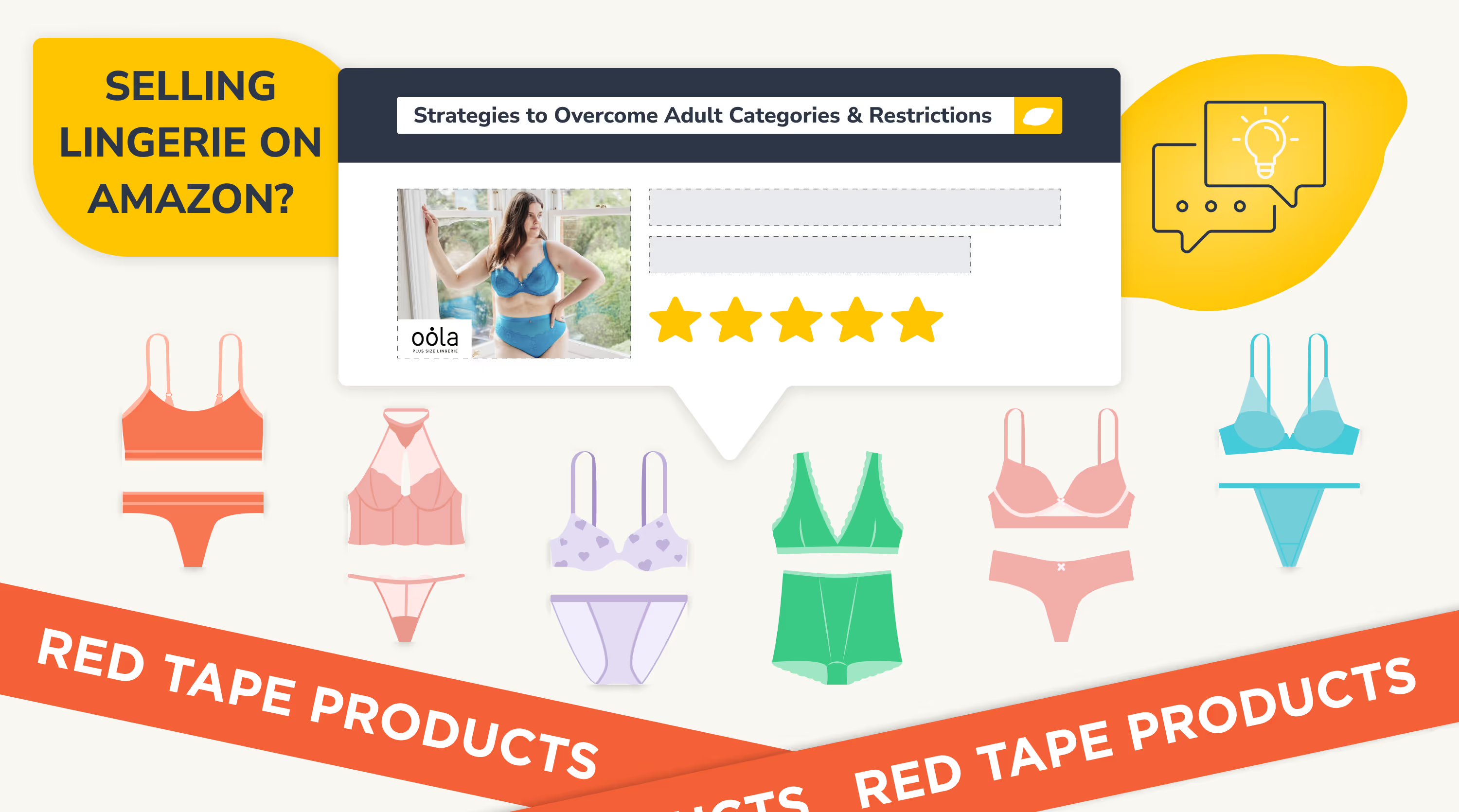How To Sell Lingerie on Amazon: Strategies to Overcome Adult Categories & Restrictions

Are you ready to successfully sell lingerie on Amazon while playing by Amazon’s rules? Well, keep reading because we’ve got the inside scoop from our Amazon experts on how to wiggle your way out of Amazon’s lingerie-selling traps…
- Market research
- Adhere to Amazon Guidelines & Policies
- Product Images
- Accurate Sizing
- Categories to Sell in
- Transparency
Market Research
Before you commit to selling lingerie on Amazon, make sure you know the lay of the land; a bit of market research on profitable niches, high-demand products, and lingerie that is less likely to fall under restricted or prohibited categories, will go a long way. Playing safe can often be the rewarding route on Amazon, so we suggest mainstream styles such as bras, knickers, camisoles, or loungewear, as they tend to have fewer restrictions. Consider factors such as style, size range, and customer preferences, and look for unique or specialised lingerie items that may have less competition but still cater to a specific audience.
Adhere to Amazon Guidelines & Policies
With certain guidelines and policies in place to maintain a safe and trustworthy platform for its customers, it’s often Amazon’s way or no way if you breach their content policies, so we encourage that you adhere to them the best you can. Familiarise yourself with their guidelines to avoid listing items that violate their guidelines which will result in listing removals – or worse – account suspensions.
Product Images
Creating high-quality and high-resolution product images is a must when it comes to lingerie; your product images need to speak for themselves! Show off your lingerie from every angle, highlighting the perfect fit and unique features. Oh, and remember, while you can make use of models in your images, there are a few strict no-nos to keep things PG:
- Product images/pack shots that feature a model are not permitted for all placements (homepages & Fire devices).
- Images clearly displaying a model may be permitted, however, the following types of lifestyle images are prohibited for all placements:
- Images that have been tightly cropped to focus on intimate body parts such as the breasts, buttocks or groin.
- Transparent garments that expose intimate body parts.
- Images that show models partially undressed in an unnatural setting, such as outdoors.
Accurate Sizing
Providing accurate size information for each garment when selling lingerie is essential to prevent customers purchasing your products in the wrong size and fit, and lessens the likelihood of increased returns, low profitability, and even lower customer satisfaction ratings. This could be in standard sizes (S, M, L, XL, etc.) or specific measurements, depending on the nature of each product and what suits best. Better yet, include a detailed size chart with local and international size conversions, either in the product description or main listing images.
Categories to Sell in
Want to create a storefront that showcases your lingerie empire? Bear in mind that Amazon won't let you mix categories. If you're selling lingerie, it’s important to find your rightful place in the adult category and stick to the world of adult products. No mixing and matching categories here; doing so will mark you a candidate for rejection by Amazon (yikes)!
Transparency
Being a platform that loves transparency, Amazon has made it obligatory for lingerie sellers to flaunt the phrase "ADULTS ONLY" in storefront headers and A+ content to let customers know what they’re in for.
We hope you have found this helpful, but if you're still struggling to conquer Amazon's lingerie maze, no worries! Click that button at the top of the page to get in touch with us, and we'll be your lingerie-selling superheroes, ensuring your listings thrive, undisturbed by Amazon’s interference.



